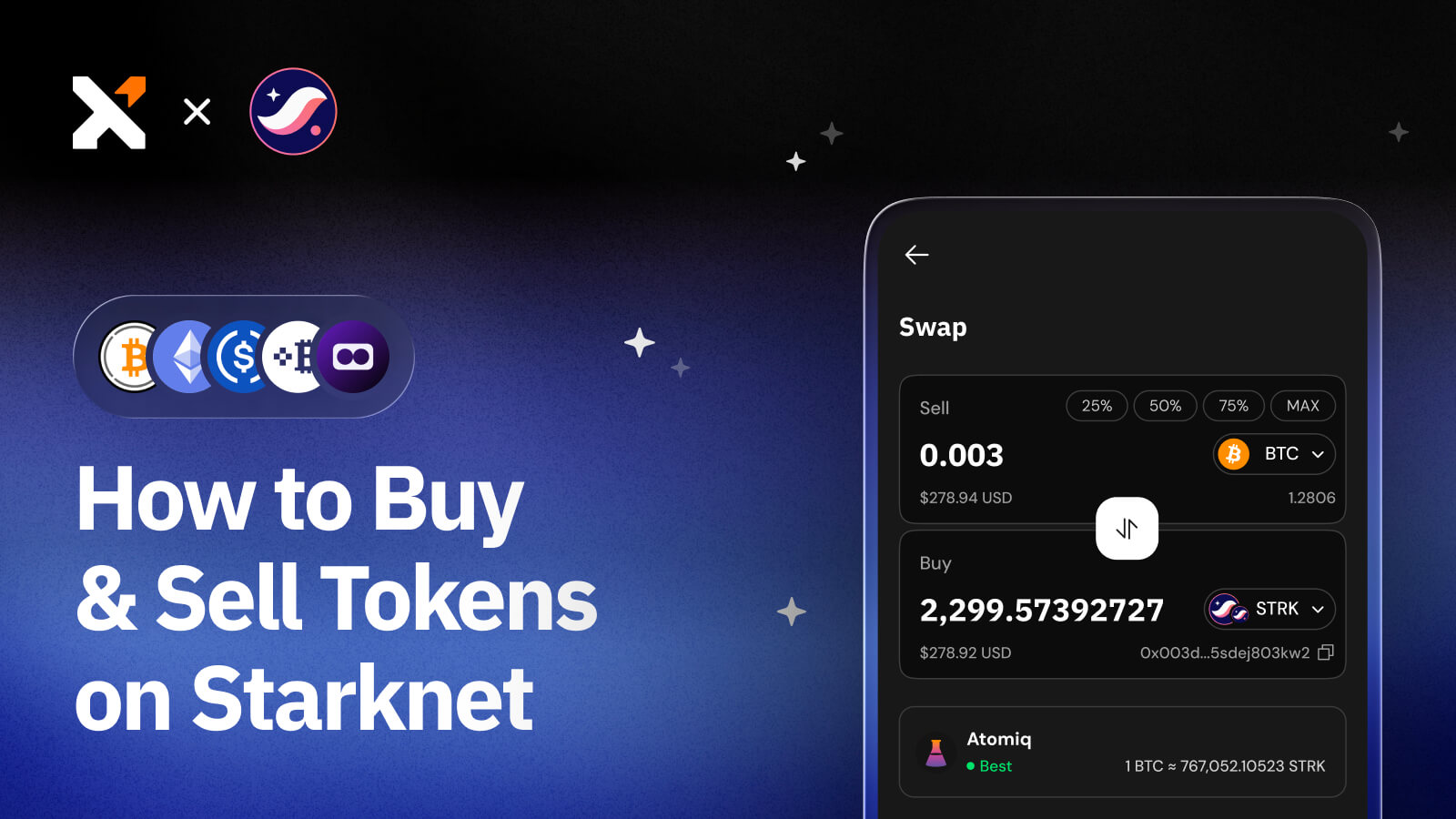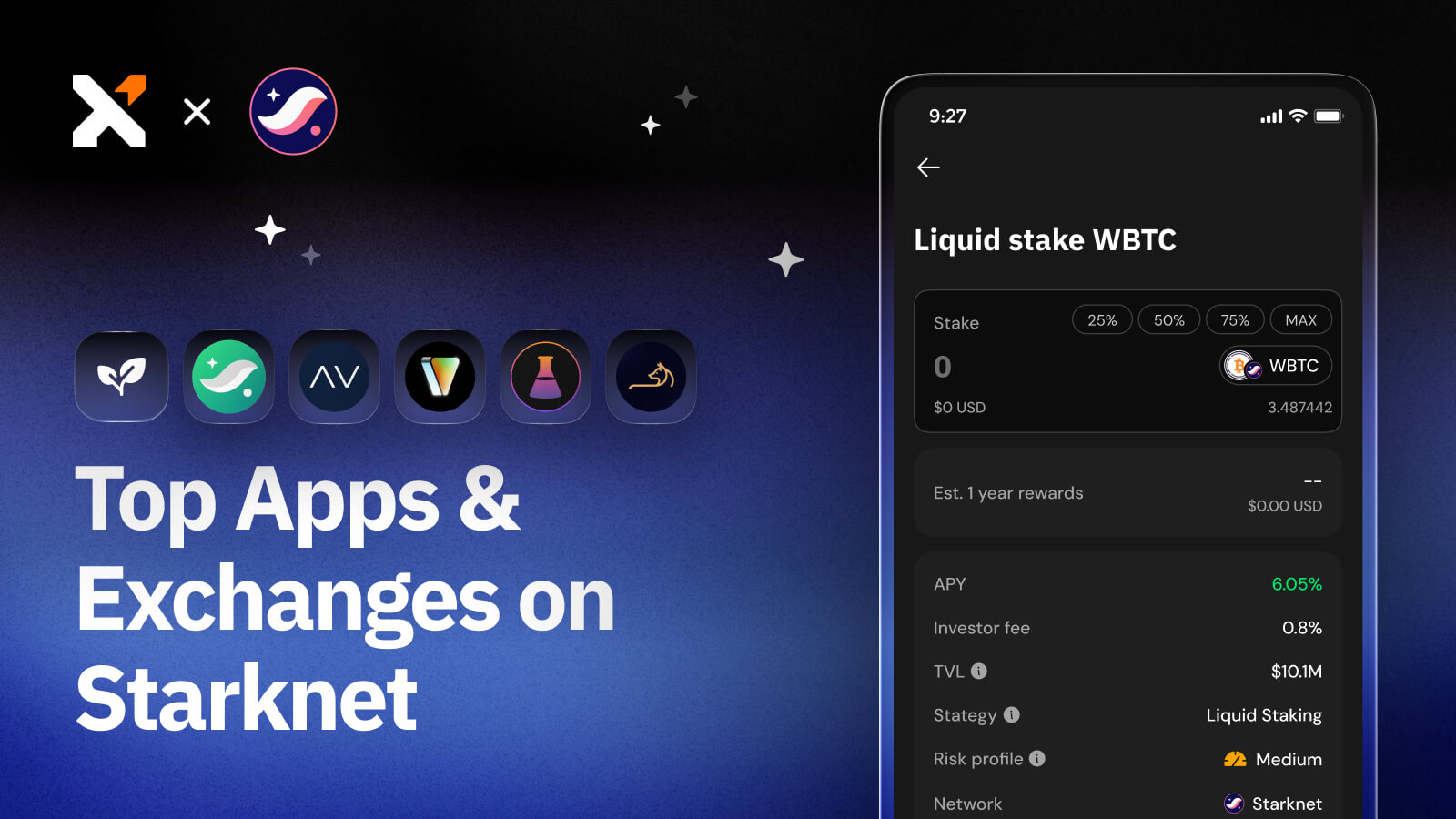Building on Bitcoin: An Introduction
Building on Bitcoin has become easier than ever thanks to on-chain protocols Ordinals and Runes, and Layer 2 protocols.
.jpg)
Sign up for updates!
Stay tuned to our latest news and updates
.svg)
The building on Bitcoin movement is thriving thanks to innovations on the main chain and layer 2 protocols providing smart contract functionalities to the Bitcoin ecosystem to create new decentralized solutions secured by Bitcoin.
Read on to learn more about building on Bitcoin, what can be built on this blockchain, and what these builders are most excited about.
What Does “Building on Bitcoin” Mean?
Building on Bitcoin refers to using Bitcoin as a base layer for developing new applications and technologies like decentralized finance (DeFi) or non-fungible tokens (NFT). These developments improve scalability and expand the utility of the Bitcoin network.
Building functionality on Bitcoin allows builders to leverage the benefits of the network while tapping into the world of smart contracts and decentralized applications (dApps).
There are different approaches to building on Bitcoin, building on layer 1 or layer 2.
Building on Layer 1
Building on layer 1 of Bitcoin refers to building directly on the Bitcoin blockchain.
For example, you can build on Bitcoin layer 1 using Bitcoin Ordinals.
Bitcoin Ordinals are satoshis that have been inscribed with metadata, enabling the creation of Bitcoin Ordinal NFTs and Bitcoin-native fungible assets, such as BRC-20 tokens. The SegWit and the Taproot soft forks paved the way for this development in the Bitcoin network.
Building on Layer 2
Layer 2 refers to protocols built on top of the Bitcoin blockchain using off-chain processing elements to improve the scalability and utility of Bitcoin.
Layer 2 applications can run independently from the network and add more use cases to the Bitcoin ecosystem. Stacks is one of the most promising Bitcoin layer 2 protocols. Other examples include Build on Bitcoin (BoB), Merlin Chain, Rootstock, and the Lightning Network.
Why Are More and More Blockchain Developers Building on Bitcoin?

Bitcoin has an edge over other networks when it comes to security, decentralization, and economic value.
Bitcoin’s Security
Bitcoin's market dominance is backed by a history of resilience to tampering. Building on Bitcoin presents an opportunity to leverage Bitcoin’s security and immutability.
The network’s security is maintained by the decentralized nature of the blockchain. Thousands of Bitcoin users run nodes to validate transactions combined with an ever-increasing hash rate from a broad range of miners helps to secure to network and ensure its continuity.
Network Stability
Bitcoin’s base layer simplicity contributes to its durability, resulting in no network downtime in the past decade. This makes Bitcoin an optimal platform for developers to build more complex financial products and services that require a robust base infrastructure to function on.
Economic Viability
Bitcoin is considered the most economically viable blockchain, as BTC is the most liquid crypto asset with a current market capitalization of over $500 billion.
The digital currency’s economic strength arguably comes from its scarcity, as it has a total supply of only 21 million BTC, which has been met with increasing demand since its inception in 2009, resulting in the incredible price developments we have witnessed in the last 14 years.
For people building on Bitcoin, this gives a sense of financial security that their products will continue to have value as the blockchain ecosystem grows.
What Can Be Built on Top of Bitcoin?

Enabled by the emergence of the Ordinals protocol and Bitcoin layers, such as Stacks, a wide range of decentralized solutions can be built on top of Bitcoin.
Let’s take a look at some of the most promising use cases.
- Bitcoin DeFi: Decentralized finance (DeFi) platforms built on Bitcoin allow you to utilize a suite of different Internet-native financial services without the need for a centralized authority. Examples include borrowing and lending and decentralized trading.
- Fungible tokens: The emergence of Ordinal Theory has enabled the development of Bitcoin-native tokens, such as BRC-20 and Runes tokens. Moreover, you can find fungible tokens secured by Bitcoin on Bitcoin layers, such as Stacks, that you can deploy in DeFi protocols and other decentralized applications.
- Bitcoin NFTs: Bitcoin NFTs exist on-chain, in the form of Bitcoin Ordinal inscriptions, and on Bitcoin layers. In the Stacks ecosystem, for example, you can find a vibrant NFT market.
- Bitcoin DAOs: DAOs are community structures that allow blockchain network users to take part in decision-making. Bitcoin DAOs allow users on layer 2 solutions like Stack to accommodate protocols that support DAOs secured by Bitcoin.
- Bitcoin bridges: Bitcoin bridges help the Bitcoin network to communicate and exchange information with other blockchains. They increase interoperability, improve liquidity, and bring more utility to the Bitcoin ecosystem.
- Bitcoin decentralized identities: Bitcoin decentralized identities help people have control over how they interact with the Bitcoin ecosystem. Examples of decentralized identities built on Bitcoin are Sats Names and BNS domain names.
How to Build on Bitcoin Layer 1

The emergence of Ordinal Theory has ushered in a new "build on Bitcoin” movement on layer 1, with the development of both fungible and non-fungible tokens on the Bitcoin blockchain.
Inscribe Digital Collectibles
You can inscribe satoshis, or sats, the smallest units of BTC, with metadata to create digital collectibles. The sats are given serial ordinal numbers for tracking and arbitrary data, such as images, texts, or videos, is attached to the unit to create collectibles on Bitcoin layer 1.
Launch Ordinals Collections
NFT marketplaces like Gamma and Magic Eden allow you to inscribe and launch ordinals collections using your Xverse wallet in a few simple steps. This has created a thriving market for on-chain Bitcoin NFT collections.
Get Creative with Recursive Inscriptions
Recursive inscriptions are a way to retrieve data from already existing Ordinal inscriptions to create new inscriptions. You can use recursive inscriptions to overcome inscription storage limitations and create more complex, innovative digital artifacts. Additionally, recursive inscriptions allow you to be more creative by incorporating data from other inscriptions into your creation.
Create BRC-20 Meme Coins
BRC-20 meme coins are fungible tokens on the Bitcoin blockchain that leverage the Ordinals protocol. You can create BRC-20 tokens by inscribing JSON data onto satoshis.
Etch & Mint Runes Tokens
You can etch and mint Runes tokens, known as runes, directly on the Bitcoin blockchain using the namesake protocol. These are fungible tokens created by using Bitcoin’s UTXO (unspent transaction output) model and OP_RETURN, a function that stores data on this blockchain. Runestones, or the messages on the Runes protocol, are used to etch new tokens, mint existing tokens, and transfer runes.
How to Build on Bitcoin on Layer 2: Introducing Stacks

While Ordinal Theory has enabled developers to build a suite of exciting, new on-chain products on Bitcoin, most building in the Bitcoin ecosystem is happening on Bitcoin layers.
Bitcoin layers like Stacks provide increased utility to the Bitcoin ecosystem by providing smart contract capabilities not found on Bitcoin’s base layer.
What Is Stacks?
Stacks is an open-source protocol that brings smart contracts, programmability, and decentralized applications to the Bitcoin network for improved functionality.
The protocol uses a unique consensus mechanism, Proof of Transfer (PoX), and Clarity, a smart contract language.
Stacks has a native token, STX, that drives the execution of smart contracts and processes transactions. It was founded in 2017 as Blockstack by Muneeb Ali and Ryan Shea. Blockstack rebranded to Stacks in 2020.
How Does Stacks Work?
Stacks is a decentralized protocol built on top of the Bitcoin blockchain using the network as a settlement layer without changing the mainnet. Stacks anchors itself to Bitcoin through a mining mechanism called Proof of Transfer (PoX). Therefore, any transaction on the Stacks network can be verified on Bitcoin.
Proof of Transfer regulates the interaction between two actors in Stacks: miners and stackers. Miners on the network lock bitcoin in a smart contract to participate in validating Stacks transactions and, in turn, get rewarded in STX. Stackers, on the other hand, are STX token holders that temporarily lock their tokens in the network in exchange for the BTC locked by miners as rewards.
Stacks also features Clarity, a programming language that supports writing smart contracts on Bitcoin. Clarity is secure, human-readable, and predictable to prevent contract exploitation. The biggest difference between Clarity and other programming languages is that Clarity can be interpreted and displayed on the Bitcoin blockchain without any changes.
STX tokens can be temporarily “locked up” by token holders in a process called “stacking STX,” which enables them to earn bitcoin rewards for taking part in the protocol’s consensus mechanism. Moreover, STX is used to pay transaction fees on the Stacks network.
What Can You Build on Stacks?
The Stacks network leverages Bitcoin’s security and permissionless structure to enable builders to develop a wide range of decentralized applications (dApps), such as NFT marketplaces, DeFi lending platforms, decentralized trading pools, and more.
Essentially, anything you can find (and build) in Web3, you can also build on Bitcoin using Stacks.
Stacks dApps: Who’s Already Building on Stacks?
Stack dApps give Bitcoin more use cases and utility in different industries.
For example, there are two notable decentralized finance protocols called ALEX and Arkadiko. ALEX is an open-sourced DEX where you can deposit, trade, lend/borrow, or stake digital assets, while Arkadiko is an open-source non-custodial liquidity protocol for collateralizing and borrowing digital assets.
There are also numerous Stacks-powered platforms in the NFT space, such as Gamma and Indexer. Gamma is an NFT marketplace where you can securely buy, sell, mint, and inscribe Ordinals.
You can connect to these Stacks dApps using Xverse, a self-custodial Stacks wallet.
Builders Will Take Bitcoin to the Next Level
Bitcoin Web3 is attracting more attention, resulting in more builders moving (back) to Bitcoin to develop innovative new products and services for the decentralized digital economy.
Stacks offers unique features to power new use cases for Bitcoin.
These innovative solutions will not only benefit the scalability and functionality of Bitcoin but also increase Web3 adoption in the future.
Start Building on Bitcoin Using SatsConnect
You can start building on Bitcoin by using SatsConnect to connect apps to your Xverse or Unisat wallet.
SatsConnect is a JavaScript library that interacts with your wallet to retrieve BTC addresses and request transaction signatures on Bitcoin, Stacks, and other Bitcoin layer 2 protocols. You can seamlessly integrate your apps with your Xverse wallet to etch runes, create BRC-20 meme coins, inscribe satoshis, and more.
Download Xverse now to use the most advanced Bitcoin wallet to manage your BTC.
FAQs
Can dApps Be Built on Bitcoin?
Yes, you can build dApps on Bitcoin. You can employ different scaling solutions, also known as Layer 2, to build on top of the Bitcoin network. Layer 2 protocols add more functionality to Bitcoin by bringing smart contracts and decentralized applications to the ecosystem.
What Makes Building on Bitcoin Special?
The Bitcoin network is the most secure and decentralized cryptocurrency network in the world, providing a robust foundation for the development of decentralized products and services for Web3. Builders can, therefore, rest assured that they are building solutions on top of a network that is well-positioned to stand the test of time.
Share this article



.svg)




